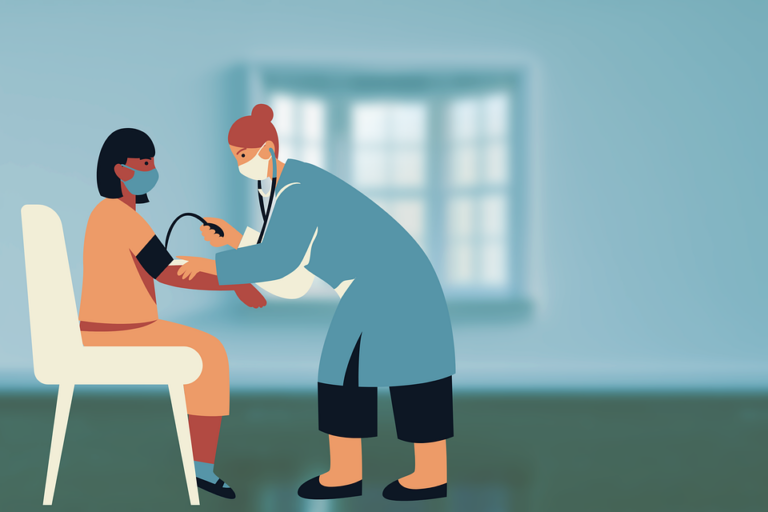Book Appointment Now

Vila Health: Educational Technology Needs Assessment
As technology transforms the healthcare industry, educational tools have become essential for equipping healthcare professionals with the knowledge and skills needed to provide quality care. At Vila Health, a fictional healthcare organization used as a case study in academic and professional development scenarios, assessing educational technology needs is crucial to fostering a culture of continuous learning and improving patient outcomes. This essay explores the importance of educational technology at Vila Health, identifies gaps, and suggests innovative solutions to enhance staff learning and development.
The Role of Educational Technology in Healthcare
Educational technology in healthcare encompasses digital tools and platforms that facilitate the learning and training of healthcare professionals. These technologies include learning management systems (LMS), simulation-based training, virtual reality (VR), and mobile applications. For Vila Health, integrating educational technology is vital for meeting regulatory requirements, addressing skill gaps, and fostering professional growth.
Enhancing Competency and Compliance
Healthcare professionals must continually update their knowledge to keep pace with evolving medical standards, protocols, and technologies. Educational tools enable Vila Health to deliver targeted training programs that ensure staff compliance with accreditation standards and policies. This is especially critical in maintaining licensure, meeting Joint Commission standards, and ensuring adherence to evidence-based practices (McGonigle & Mastrian, 2021). For instance, an LMS could automate compliance tracking, ensuring that no staff member falls behind on mandatory training.
Promoting Patient Safety
Errors stemming from knowledge gaps can compromise patient safety and lead to adverse outcomes. Educational technology provides on-demand resources that empower staff to refine their skills and improve care delivery. Quick-reference applications, for example, can assist healthcare providers in accessing drug interaction data or emergency protocols in real time. Such tools reduce the likelihood of errors and enhance clinical decision-making in high-pressure scenarios (Lateef, 2010).
Grab a 100% custom nursing paper about Villa Health tailored to your instructions
Get Custom Nursing Paper
Current Gaps in Educational Technology at Vila Health
While Vila Health aims to lead in healthcare delivery, several gaps hinder its ability to leverage educational technology effectively:
Limited Access to Learning Platforms
Vila Health lacks an integrated LMS to centralize training and development initiatives. Without this system, tracking employee training progress, certifications, and skill gaps is inefficient, leaving critical compliance issues unaddressed. This decentralized approach also limits Vila Health’s ability to provide consistent, role-specific training across its workforce.
Insufficient Simulation-Based Training
Simulation-based education, a cornerstone of experiential learning in healthcare, is underutilized at Vila Health. High-fidelity simulations allow healthcare professionals to practice complex procedures and clinical decision-making in risk-free environments. For example, neonatal resuscitation simulations enable practitioners to gain confidence and proficiency without jeopardizing patient safety (Schmitt & White, 2017). Vila Health’s limited investment in simulation technology restricts such opportunities.
Inequitable Access to Technology
Technology access across Vila Health’s departments is inconsistent. Some units struggle with outdated equipment, unreliable internet connectivity, and insufficient devices, creating barriers to staff development. This inequity not only hampers learning but also demoralizes staff who are unable to benefit from modern educational tools.
Lack of Customizable Content
Generic training programs fail to address the unique challenges faced by Vila Health’s workforce. Tailored content—focused on specific organizational workflows, patient demographics, and local policies—is essential for relevant and effective training.
Innovative Solutions for Vila Health’s Educational Technology Needs
To address these gaps, Vila Health can adopt several innovative strategies:
1. Implementing a Comprehensive Learning Management System (LMS)
A robust LMS is critical for managing and delivering training programs efficiently. Modern LMS platforms offer features like personalized learning paths, automated compliance tracking, and performance analytics. Vila Health can use these tools to ensure that staff training is targeted and aligned with their roles. Furthermore, LMS platforms support multimedia content, such as videos and interactive modules, making learning engaging and accessible (McGonigle & Mastrian, 2021).
2. Expanding Simulation-Based Training Programs
Simulation-based training is one of the most effective methods for developing clinical and decision-making skills. By investing in high-fidelity manikins and VR modules, Vila Health can create realistic, immersive scenarios for staff training. For instance, cardiac emergency simulations allow practitioners to refine their responses to life-threatening situations. Studies have shown that simulation-based training reduces errors and improves clinical outcomes (Schmitt & White, 2017). Also read: NR 304 Nursing Standardized Simulation
3. Ensuring Technology Equity Across Departments
To ensure all staff have equal access to educational resources, Vila Health must upgrade outdated devices, improve internet connectivity, and provide ongoing technical support. By addressing these disparities, Vila Health can foster a more inclusive learning environment where all employees have the tools they need to succeed.
4. Creating Customizable Training Content
Tailored e-learning modules can address the specific needs of Vila Health staff. For example, modules on organization-specific workflows or local health regulations provide practical knowledge that generic programs cannot offer. This customization ensures that training remains relevant and directly applicable to daily operations.
5. Incorporating Mobile Learning Solutions
Mobile learning tools provide flexibility by enabling staff to access training modules anytime, anywhere. Bite-sized lessons on infection control or clinical protocols can be delivered via smartphone apps, ensuring continuous learning without disrupting workflows.
Challenges in Implementing Educational Technology at Vila Health
Adopting educational technology presents several challenges:
Budgetary Constraints
Advanced educational technologies, such as VR simulators or a comprehensive LMS, require significant financial investment. Vila Health should explore external funding sources, such as grants and partnerships, to mitigate costs.
Staff Resistance
Introducing new technologies can be met with resistance from staff unfamiliar with these tools. Vila Health must invest in change management strategies, including training and demonstrations, to build confidence and support for the new systems.
Sustainability
Educational technologies require ongoing maintenance, updates, and technical support. Establishing dedicated teams to oversee these aspects ensures the long-term success of these initiatives.
The Future of Educational Technology at Vila Health
The future of educational technology at Vila Health lies in adopting emerging trends that enhance learning and development. For instance, AI-powered platforms can provide personalized training by identifying individual learning gaps. Gamification strategies, such as incorporating rewards and challenges, can boost engagement and motivation. Finally, data-driven insights from analytics can refine educational strategies, ensuring continuous improvement.
A comprehensive assessment of Vila Health’s educational technology needs reveals significant opportunities for enhancing staff training and patient care. Addressing gaps such as limited access to learning platforms, underutilization of simulations, and inequitable technology distribution will empower Vila Health to foster a culture of continuous learning. By investing in tools like LMS platforms, simulation technologies, and mobile learning solutions, Vila Health can prepare its workforce to meet the demands of modern healthcare. Embracing these innovations not only ensures compliance and competency but also reinforces Vila Health’s commitment to excellence in patient care.
References
Goleman, D. (1995). Emotional Intelligence: Why It Can Matter More Than IQ. Bantam Books.
Lateef, F. (2010). Simulation-based learning: Just like the real thing. Journal of Emergencies, Trauma, and Shock, 3(4), 348–352. https://doi.org/10.4103/0974-2700.70743
McGonigle, D., & Mastrian, K. G. (2021). Nursing Informatics and the Foundation of Knowledge. Jones & Bartlett Learning.
Schmitt, T. L., & White, S. J. (2017). Impact of simulation-based education in healthcare. Clinical Simulation in Nursing, 13(5), 209–216. https://doi.org/10.1016/j.ecns.2017.01.009







